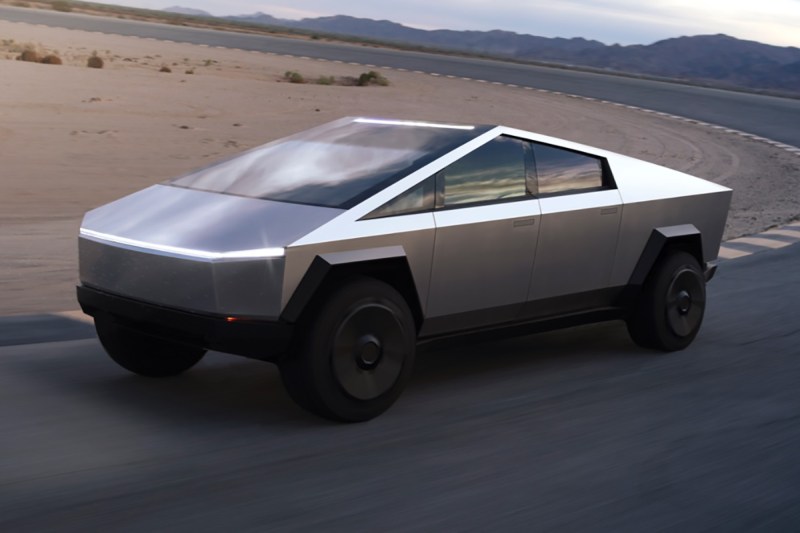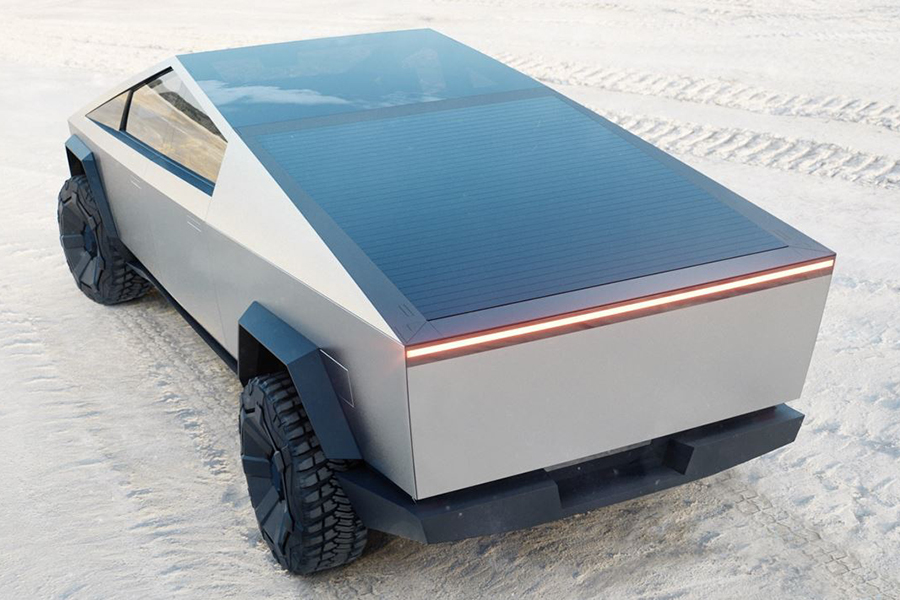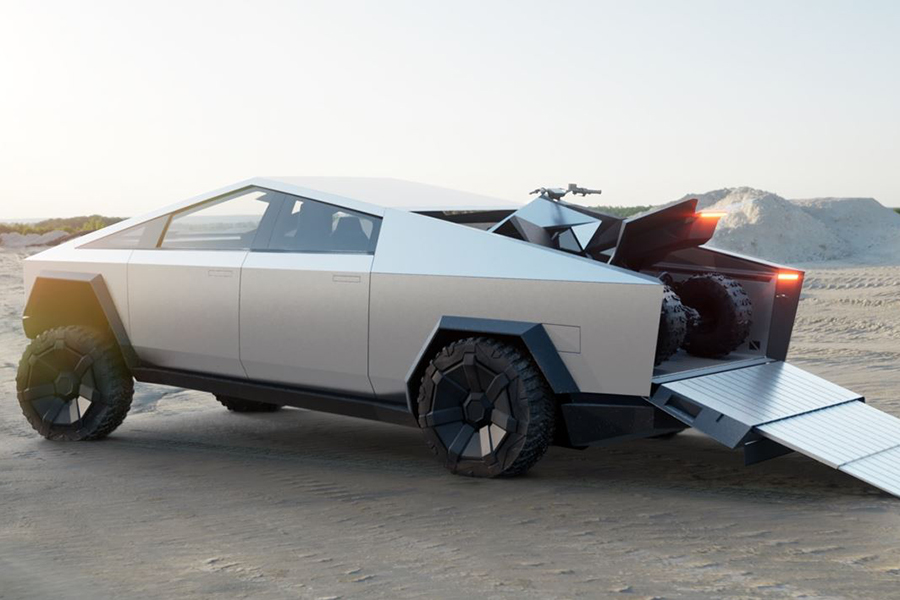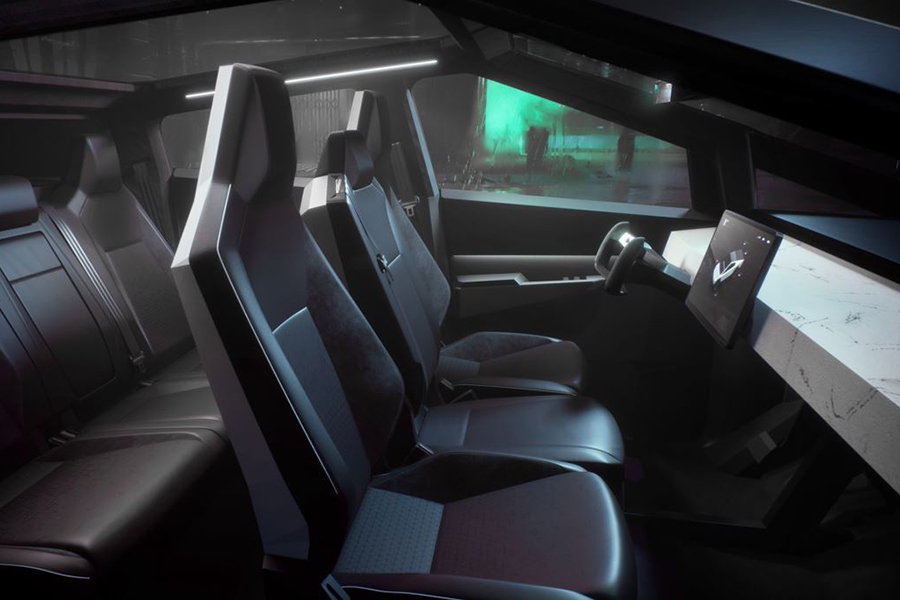Elon Musk has spent his entire public life thumbing his nose at convention. He spent millions to launch his own sports car into space, he regularly trolls the Flat Earth Society on Twitter for sport, and he coyly named each successive Tesla model “S,” “3,” “X,” “Y.” (Read that back carefully, in case you missed it.) He’s living the billionaire lifestyle most of us aspired to as adolescent boys. Last week, he announced Tesla’s first pickup truck. Contrary to near-universal public surprise, it’s precisely what we should all have expected from Musk.

When the electric Cybertruck (marketed in all caps with the bad-ass moniker “CYBERTRK” because of course, it would be) rolled onto the stage at last week’s Telsa press event, there were audible gasps from the audience. From the side, the truck’s silhouette is like a study in post-apocalyptic automotive design. The asymmetrical stainless steel shell is somehow both chunky and sleek. Rolling on jet black wheels and tires with an all-black chassis, it’s like a SWAT vehicle straight out of Blade Runner 2049. It is, quite literally, unlike any production pickup the world has ever seen.
In a podcast interview last year, Musk made it clear that this is a love-it-or-hate-it design. “You know, I actually don’t know if a lot of people will buy this pickup truck or not, but I don’t care. If there’s only a small number of people that like that truck, I guess we’ll make a more conventional truck in the future.”
Typical of most Tesla launches, Elon Musk is already talking a big game with the Cybertruck. He promises more power and better towing capacity than the Ford F-150, plus performance numbers that trounce a Porsche 911. By the numbers, that translates to a maximum payload of 3,500 pounds, a 14,000-pound towing capacity, and a 0-60 miles-per-hour run in less than three seconds. With a maximum range of more than 500 miles, it could be one of the most fun, most practical, and greenest pickup trucks on the road when it arrives in 2021.
If all that isn’t disco enough for you, Musk is touting the truck as “literally bulletproof.” Unlike standard pickups, the cab and bed of the Cybertruck are made from a single form of cold-rolled stainless steel. The proprietary material is the same metal used in SpaceX rockets, making it impenetrable against at least 9mm handgun rounds. At last week’s event, a Tesla staffer struck the body with a sledgehammer to no effect. The windows are likewise made of nearly indestructible Tesla armor glass — allegedly. A botched demonstration of their strength involving a metal ball shattering two of the Cybertruck’s “unshatterable” windows became the unintended focus of the event.
There’s one more surprising thing about the Tesla Cybertruck: The price. The entry-level Single Motor RWD trim starts at just $39,900, while the top-of-the-line Tri Motor AWD is expected to sticker for close to $70,000. Production isn’t slated to begin for at least two years, but Tesla reports it’s already received more than 200,000 pre-orders.






